Even Star Systems Have Identity Crises. 🤷 According To Data From Observatories Like Our @nasachandraxray,
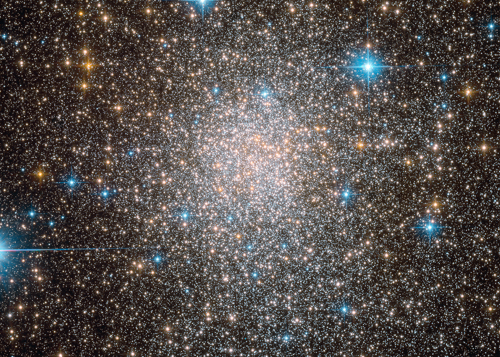
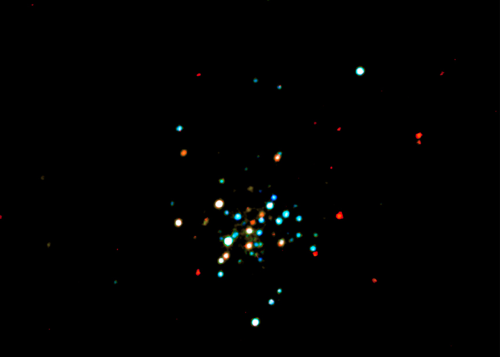
Even star systems have identity crises. 🤷 According to data from observatories like our @nasachandraxray, a double star system has been rapidly flipping between two alter egos: a low-mass X-ray binary and a millisecond pulsar. Astronomers found this volatile double system in a dense collection of stars known as Terzan 5. The first image from @NASAHubble shows Terzan 5 in optical light. Swipe to see the new image where low, medium and high-energy X-rays detected by Chandra are colored red, green and blue respectively. Click the link in bio for more.
Make sure to follow us on Tumblr for your regular dose of space: http://nasa.tumblr.com
More Posts from Nasa and Others
Global Temperature by the Numbers
The Year
4th Hottest
2018 was the fourth hottest year since modern recordkeeping began. NASA and the National Oceanic and Atmospheric Administration work together to track temperatures around the world and study how they change from year to year. For decades, the overall global temperature has been increasing.

Over the long term, world temperatures are warming, but each individual year is affected by things like El Niño ocean patterns and specific weather events.
1.5 degrees
Globally, Earth’s temperature was more than 1.5 degrees Fahrenheit warmer than the average from 1951 to 1980.

The Record
139 years
Since 1880, we can put together a consistent record of temperatures around the planet and see that it was much colder in the late-19th century. Before 1880, uncertainties in tracking global temperatures were too large. Temperatures have increased even faster since the 1970s, the result of increasing greenhouse gases in the atmosphere.

Five Hottest
The last five years have been the hottest in the modern record.

6,300 Individual Observations
Scientists from NASA use data from 6,300 weather stations and Antarctic research stations, together with ship- and buoy-based observations of sea surface temperatures to track global temperatures.

The Consequences
605,830 swimming pools
As the planet warms, polar ice is melting at an accelerated rate. The Greenland and Antarctic ice sheets lost about 605,830 Olympic swimming pools (400 billion gallons) of water between 1993 and 2016.

8 inches
Melting ice raises sea levels around the world. While ice melts into the ocean, heat also causes the water to expand. Since 1880, sea levels around the world have risen approximately 8 inches.

71,189 acres burned
One symptom of the warmer climate is that fire seasons burn hotter and longer. In 2018, wildfires burned more than 71,189 acres in the U.S. alone.

46% increase in CO2 levels
CO2 levels have increased 46 percent since the late 19th Century, which is a dominant factor causing global warming.

Vote for Space at SXSW 2017
We need your help! There are a number of exciting space-related panels proposed for next year’s South by Southwest Interactive Festival in Austin, Texas. SXSW is a community-driven event and voting accounts for 30% of the decision-making process for any given programming slot. The selection process is extremely competitive and the more votes we submit for the space panels, the more likely a panel related to space exploration will be included in the final SXSW program.

To help you out as you consider what to vote for, we’ve put together a list of all the NASA-related panel proposals.
These proposals look at ways we explore the solar system and beyond:
New Eyes on our Home System: NASA's Next Telescope
Dark Energy and Exoplanets: NASA's WFIRST Mission
Capturing NASA's James Webb Space Telescope
Lessons from the Fringes of the Solar System
Into the Unknown: The People Behind Webb Telescope
These proposals looks at how we’re using out-of-this-world tech and data to create incredible experiences here on Earth and helping solve challenges through your participation:
Space 360: Experience NASA Missions in VR/AR/video
The Power of Many: Wisdom from the Crowd
It’s Time to Ask More of Open Data
A little closer to home, this proposal explores our work to study and observe our dynamic home world, Earth:
NASA - Doing Work to Keep it Cool
We want to send humans on a journey to Mars. How? These proposals would dive into this question and more:
So you want to go to Mars?
Humans, Robots + Microbes: The Challenge of Mars
"Because They Are Hard": NASA & Mars
Lastly, we’re proposing a meetup for NASA and the entire space community at SXSW 2017:
Space Meetup
Community voting and commenting for SXSW 2017 is open through September 2, 2016.
We look forward to seeing you in Austin in March at the SXSW Interactive Festival. Thanks!

Our Cassini spacecraft has been traveling in space for almost 20 years, exploring Saturn, its rings and even some of its moons. This mission has revealed never-before-seen events that are changing our understanding of how planetary systems form and what conditions might lead to habitats for life.
Cassini will complete its remarkable story of exploration with an intentional plunge into Saturn’s atmosphere, ending its mission.
Participate in our Grand Finale Events
Wednesday, Sept. 13
1 p.m. EDT – News Conference from our Jet Propulsion Laboratory with a detailed preview of final mission activities Watch HERE.
Thursday, Sept 14
4:00 - 5:00 p.m. EDT - NASA Social Live Broadcast with mission experts Watch HERE.
Friday, Sept. 15
7:00 – 8:30 a.m. EDT – Live commentary on NASA TV and online of the spacecraft’s final dive into Saturn’s atmosphere. Watch HERE.
Around 8:00 a.m. EDT – Expected time of last signal and science data from Cassini Watch HERE.
9:30 a.m. EDT – Post-mission news conference Watch HERE.
Make sure to follow us on Tumblr for your regular dose of space: http://nasa.tumblr.com.

Andre Douglas
A Virginia native, Andre Douglas served in the U.S. Coast Guard as a naval architect and salvage engineer. Douglas later worked as an engineer for Johns Hopkins University Applied Physics Laboratory on NASA's DART mission to redirect an asteroid. https://go.nasa.gov/48FBlam
Make sure to follow us on Tumblr for your regular dose of space!
It’s a U.S. Record! Cumulative Days in Space: 383

Today, Astronaut Scott Kelly has broken the record for longest time spent in space by a U.S. astronaut! Over the course of his four missions, Kelly has spent 383 cumulative days in space. This record was previously held by Astronaut Mike Fincke, with 382 days in space over three flights. Here are some more fun facts about this milestone:
4: The number of humans that have spent a year or more in orbit on a single mission
215 Days: The record currently held by Mike Lopez-Alegria for most time on a single spaceflight by U.S. astronaut. On Oct. 29, Kelly will break this record
377 Days: The current record for most days in space by a U.S. female astronaut, held by Peggy Whitson
879 Days: The record for most cumulative days in space by a human, currently held by Russian cosmonaut Gennady Padalka

Why Spend a Year in Space?
Kelly’s One-Year Mission is an important stepping stone on our journey to Mars and other deep space destinations. These investigations are expected to yield beneficial knowledge on the medical, psychological and biomedical challenges faced by astronauts during long-duration spaceflight.
Kelly is also involved in the Twins Study, which consists of ten separate investigations that are being conducted with his twin brother, who is on Earth. Since we are able to study two individuals who have the same genetics, but are in different environments for one year, we can gain a broader insight into the subtle effects and changes that may occur in spaceflight.
For regular updates on Kelly’s one-year mission aboard the space station, follow him on social media: Facebook, Twitter, Instagram.
Make sure to follow us on Tumblr for your regular dose of space: http://nasa.tumblr.com
Hubble Space Telescope
You’ve probably heard of our Hubble Space Telescope, but have you had the chance to actually take a look at the amazing images it has captured for us over the years? Since Hubble launched in April 1990, it has made more than 1.2 million observations, some to locations more than 13.4 billion light years from Earth!
Hubble can see astronomical objects with an angular size of 0.05 arc seconds, which is like seeing a pair of fireflies in Tokyo from your home in Maryland…yea, that’s pretty far! This accuracy allows us to see images like this one of Little Gem Nebula, roughly 6,000 light-years away from us.

Images from Hubble are regularly released to the public, and are some of the most breathtaking views in the Universe. Images like this one of Lagoon Nebula, in the constellation of Sagittarius, not only make for amazing desktop screen-savers, but provide us with valuable scientific information about distant stars and galaxies, as well as the planets in our solar system.

We recently celebrated Hubble’s 25th Anniversary, and look forward to many more years of discovery and captivating images.
Tune in, Starliner! How NASA’s Near Space Network Powers Communications

On May 19, 2022, our partners at Boeing launched their Starliner CST-100 spacecraft to the International Space Station as a part of our Commercial Crew Program. This latest test puts the company one step closer to joining the SpaceX Crew Dragon in ferrying astronauts to and from the orbiting laboratory. We livestreamed the launch and docking at the International Space Station, but how? Let’s look at the communications and navigation infrastructure that makes these missions possible.

Primary voice and data communications are handled by our constellation of Tracking and Data Relay Satellites (TDRS), part of our Near Space Network. These spacecraft relay communications between the crewed vehicles and mission controllers across the country via terrestrial connections with TDRS ground stations in Las Cruces, New Mexico, and Guam, a U.S. territory in the Pacific Ocean.
TDRS, as the primary communications provider for the space station, is central to the services provided to Commercial Crew vehicles. All spacecraft visiting the orbiting laboratory need TDRS services to successfully complete their missions.

During launches, human spaceflight mission managers ensure that Commercial Crew missions receive all the TDRS services they need from the Near Space Operations Control Center at our Goddard Space Flight Center in Greenbelt, Maryland. There, communications engineers synthesize network components into comprehensive and seamless services for spacecraft as they launch, dock, undock, and deorbit from the space station.

Nearby, at our Flight Dynamics Facility, navigation engineers track the spacecraft on their ascent, leveraging years of experience supporting the navigation needs of crewed missions. Using tracking data sent to our Johnson Space Center in Houston and relayed to Goddard, these engineers ensure astronaut safety throughout the vehicles’ journey to the space station.
Additionally, our Search and Rescue office monitors emergency beacons on Commercial Crew vehicles from their lab at Goddard. In the unlikely event of a launch abort, the international satellite-aided search and rescue network will be able to track and locate these beacons, helping rescue professionals to return the astronauts safely. For this specific uncrewed mission, the search and rescue system onboard the Boeing Starliner will not be activated until after landing for ground testing.

To learn more about NASA’s Space Communications and Navigation (SCaN) services and technologies, visit https://www.nasa.gov/directorates/heo/scan/index.html. To learn more about NASA’s Near Space Network, visit https://esc.gsfc.nasa.gov/projects/NSN.
Make sure to follow us on Tumblr for your regular dose of space!
Around the World 100,000 Times
The International Space Station is a microgravity laboratory in which an international crew of six people live and work while traveling at a speed of five miles per second (or 17,500 miles per hour), orbiting Earth every 90 minutes.
Monday, May 16, marks the International Space Station’s 100,000th orbit!
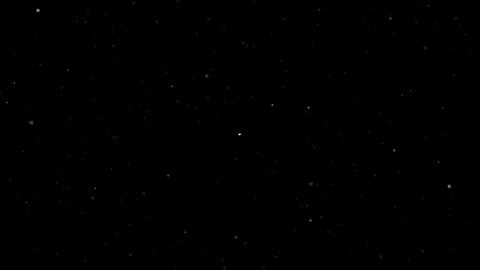
That’s more than 2,643,342,240 miles traveled! Which is also like 10 round trips to Mars, OR nearly the distance to Neptune!
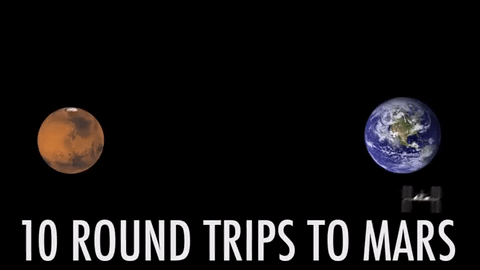
The space station has been in orbit for over 17 years, and during that time, over 1,922 research investigations have been performed. More than 1,200 scientific results publications have been produced as a result.
Important studies like the VEGGIE experiment, which is working to grow plants in microgravity, and the Twin’s Study, which is studying the impacts of microgravity on the human body, are helping us on our journey to Mars. Using this unique orbiting laboratory as a place to conduct research is helping us learn important things for future deep space missions.
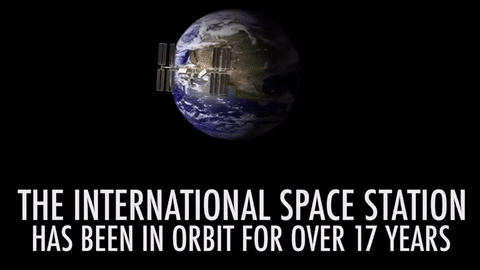
There have even been 222 different people that have visited the space station. This includes the current crew that is working and living on orbit.
Did you know that the space station is the third brightest object in the sky? If you know when and where to look up, you can spot it on your own! Find out when and where to look up HERE.
On Snapchat? Watch today’s Live Story to discover more about the orbiting laboratory and get a tour of the station! You can also add ‘nasa’ on Snapchat to get a regular dose of space.
Make sure to follow us on Tumblr for your regular dose of space: http://nasa.tumblr.com
How did you decide to scientist? How you start works? And what did you do for that ?
Question: How did you decide to be a scientist? How did you start work? And what did you do for that?
What's next for NASA? In 2019, we’re once again preparing for human missions to the Moon. We're keeping the promise by developing new systems and spacecraft, making innovations in flight and technology, living and doing science on the International Space Station, and delivering images and discoveries from our home planet, our solar system and beyond.
Check out What’s Next for NASA: https://www.nasa.gov/next
Make sure to follow us on Tumblr for your regular dose of space: http://nasa.tumblr.com
-
 lets-not-be-famous liked this · 1 year ago
lets-not-be-famous liked this · 1 year ago -
 indigobluespryte reblogged this · 2 years ago
indigobluespryte reblogged this · 2 years ago -
 ohheyitsdanielle reblogged this · 2 years ago
ohheyitsdanielle reblogged this · 2 years ago -
 pewjunie liked this · 2 years ago
pewjunie liked this · 2 years ago -
 velocitations liked this · 3 years ago
velocitations liked this · 3 years ago -
 pepperclaws liked this · 3 years ago
pepperclaws liked this · 3 years ago -
 kurulover liked this · 3 years ago
kurulover liked this · 3 years ago -
 apro009 reblogged this · 3 years ago
apro009 reblogged this · 3 years ago -
 aloo-bhorta liked this · 3 years ago
aloo-bhorta liked this · 3 years ago -
 universallynerddragonhuman liked this · 4 years ago
universallynerddragonhuman liked this · 4 years ago -
 apro009 reblogged this · 4 years ago
apro009 reblogged this · 4 years ago -
 the-awesomeness-of-randomness liked this · 4 years ago
the-awesomeness-of-randomness liked this · 4 years ago -
 haya-haya-haya reblogged this · 4 years ago
haya-haya-haya reblogged this · 4 years ago -
 cantuiakuq8 liked this · 4 years ago
cantuiakuq8 liked this · 4 years ago -
 saeminentodor65zkc liked this · 4 years ago
saeminentodor65zkc liked this · 4 years ago
Explore the universe and discover our home planet with the official NASA Tumblr account
1K posts